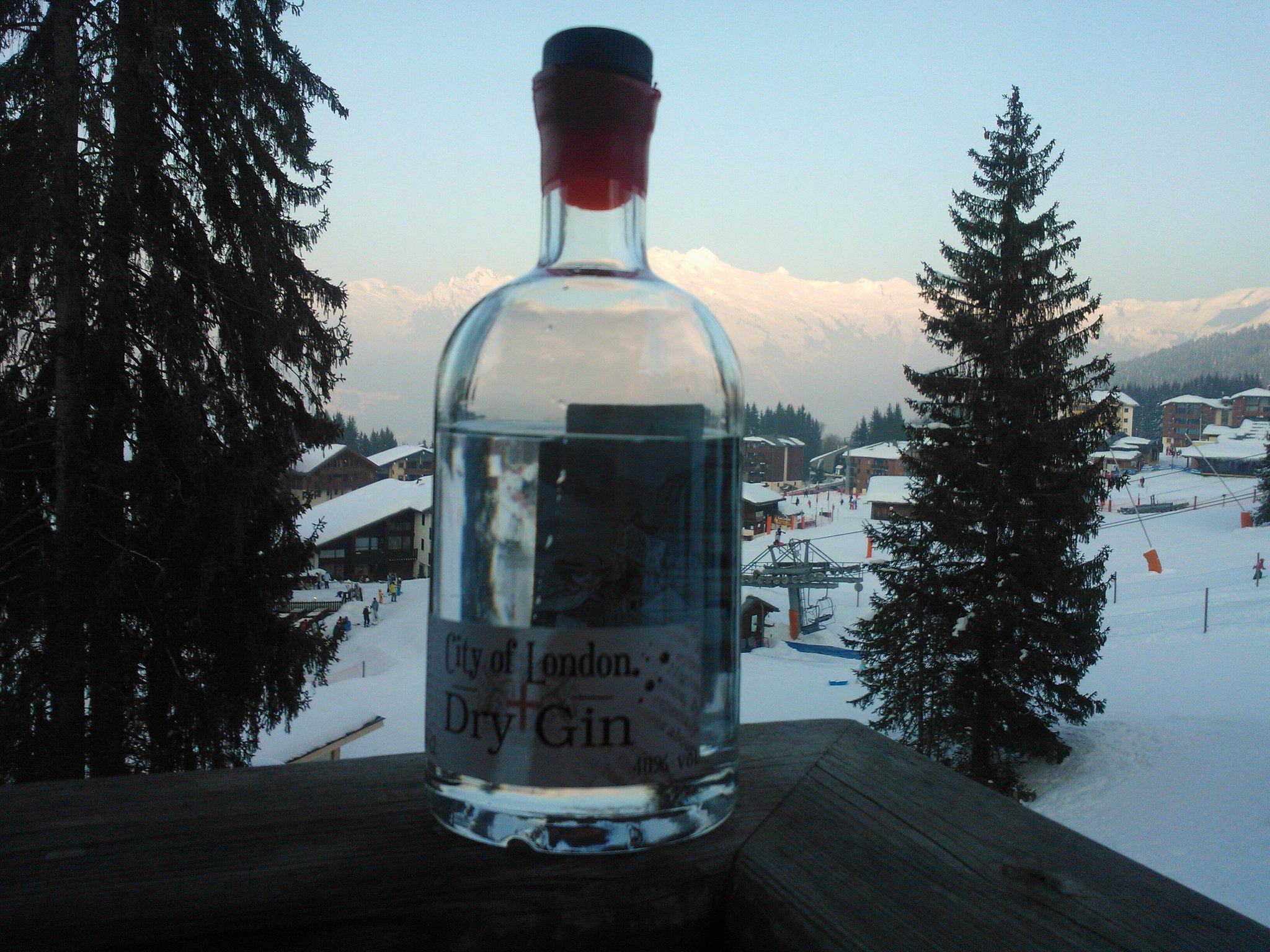Today I visited the City of London Distillery. This is two small rooms next to a large bar in a cellar in Bridewell Lane off Fleet Street. It makes the rather smooth citrus-flavoured gin shown in the picture (for which I must credit twitter: @COLDistillery).
For £8 per head (which includes a large gin and tonic) the owner will explain the process. (On the website it is called a guided tour but this seems rather a grand description of moving from one room to the other.)
I was told that that this gin and Beefeater are the only gins still distilled in London ('London Gin' can be brewed anywhere in the world) although wikipedia names four others ("Thames Distillers, Sacred Microdistillery, The London Distillery Company and Sipsmith"). Gordon's Gin is now made in Scotland.
For the first time ever I understood the three hour long distilling process. The wheat-based 96% ABV alcohol is bought in and water is added to reduce it to 65% ABV; this is then repeatedly distilled in copper stills (the copper reacts with the spirit to remove impurities). The first fraction to come off is methanol: the distiller identifies this by scent (and sometimes by taste) and taps it off. Then comes the ethanol. This is collected and put into a second copper (and again mixed with purified water; this time to 50%). It is again heated and the vapour travels through the flavourings (predominantly juniper, but also other herbs and spices including angelica, licorice root, and fresh orange and lemon peel). Having picked up these flavourings the gin is diluted to the correct strength (40% ABV) and bottled. Uniquely the bottles are then moved from the production area (which is technically a bonded warehouse) next door into the bar; it is on this move that excise duty becomes payable.
In 1751 William Hogarth published this satirical cartoon which he called Gin Lane. It shows how gin had become 'mother's ruin', the curse of the English poor. You could be 'drunk for a penny; dead drunk for twopence' as the inscription over the arch in the bottom left of the engraving says. It is said that you could drink gin via slot machine. There was no tax on gin and no control on the quality of the product. Hence the misery depicted.
It is probable that gin became popular in England after the invasion of William and Mary in 1688; gin had previously been invented (as a medicinal drink) in Holland as genever.

No comments:
Post a Comment